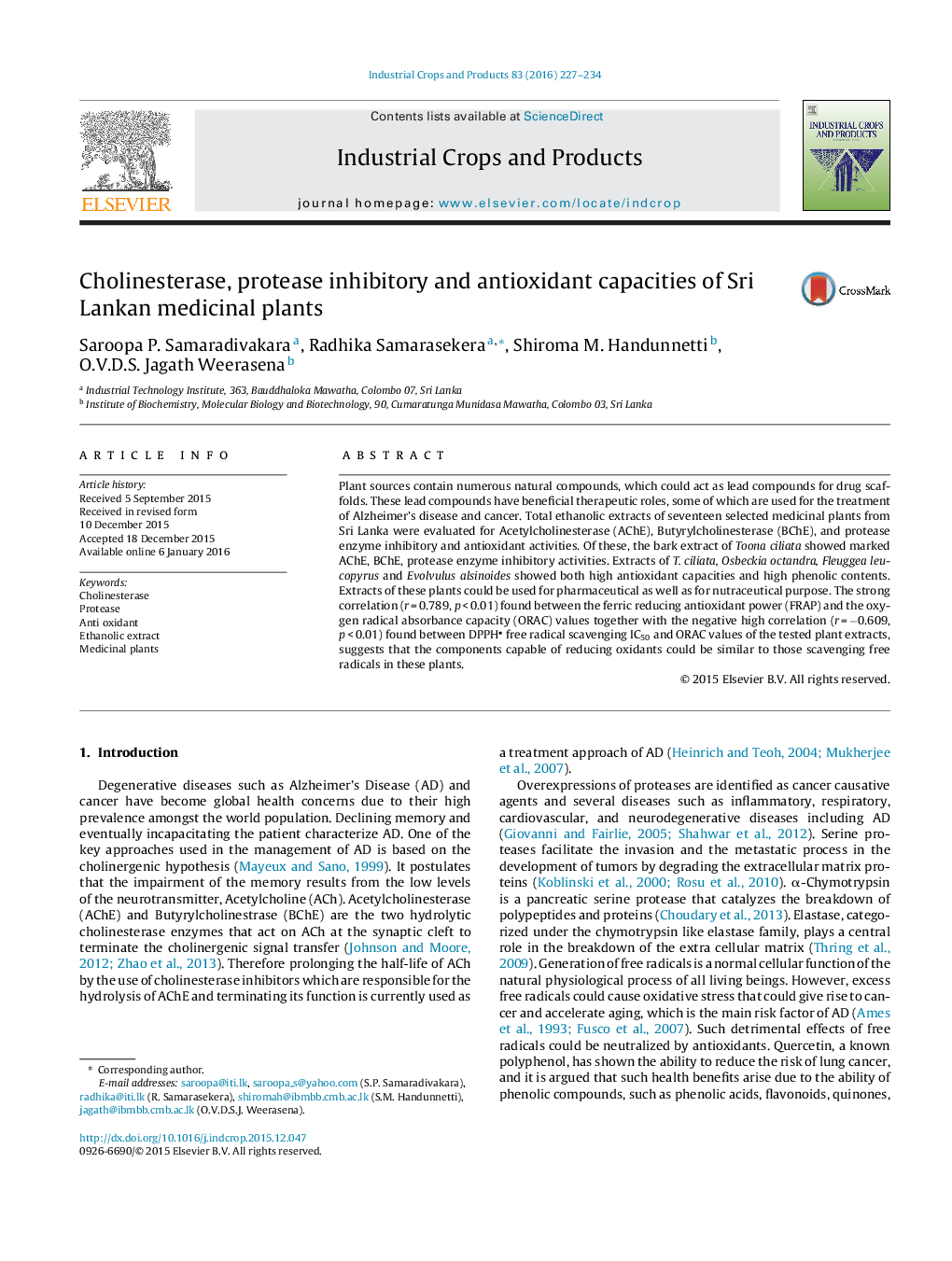| کد مقاله | کد نشریه | سال انتشار | مقاله انگلیسی | نسخه تمام متن |
|---|---|---|---|---|
| 4512302 | 1624827 | 2016 | 8 صفحه PDF | دانلود رایگان |
• Of the 17 medicinal plant extracts screened, the bark extract of Toona ciliata showed significant antioxidant capacity and marked AChE, BChE, protease enzyme inhibitory activities compared to the positive standards.
• Leaf extract of T. ciliata followed by the extracts of Osbeckia octandra, Fleuggea leucopyrus, and Evolvulus alsinoides exhibited promising antioxidant capacity and higher values in total phenolic content.
• A significant correlation was observed between the ferric reducing antioxidant power (FRAP) and the oxygen radical absorbance capacity (ORAC) for the tested plant extracts.
• A negatively significant correlation was observed between 2,2-diphenyl-1-picrylhydrazyl (DPPH) IC50 values and ORAC values for the tested plant extracts.
• Extracts of these plants could used be for pharmaceutical as well as for nutraceutical purpose.
Plant sources contain numerous natural compounds, which could act as lead compounds for drug scaffolds. These lead compounds have beneficial therapeutic roles, some of which are used for the treatment of Alzheimer’s disease and cancer. Total ethanolic extracts of seventeen selected medicinal plants from Sri Lanka were evaluated for Acetylcholinesterase (AChE), Butyrylcholinesterase (BChE), and protease enzyme inhibitory and antioxidant activities. Of these, the bark extract of Toona ciliata showed marked AChE, BChE, protease enzyme inhibitory activities. Extracts of T. ciliata, Osbeckia octandra, Fleuggea leucopyrus and Evolvulus alsinoides showed both high antioxidant capacities and high phenolic contents. Extracts of these plants could be used for pharmaceutical as well as for nutraceutical purpose. The strong correlation (r = 0.789, p < 0.01) found between the ferric reducing antioxidant power (FRAP) and the oxygen radical absorbance capacity (ORAC) values together with the negative high correlation (r = −0.609, p < 0.01) found between DPPH free radical scavenging IC50 and ORAC values of the tested plant extracts, suggests that the components capable of reducing oxidants could be similar to those scavenging free radicals in these plants.
Figure optionsDownload as PowerPoint slide
Journal: Industrial Crops and Products - Volume 83, May 2016, Pages 227–234
